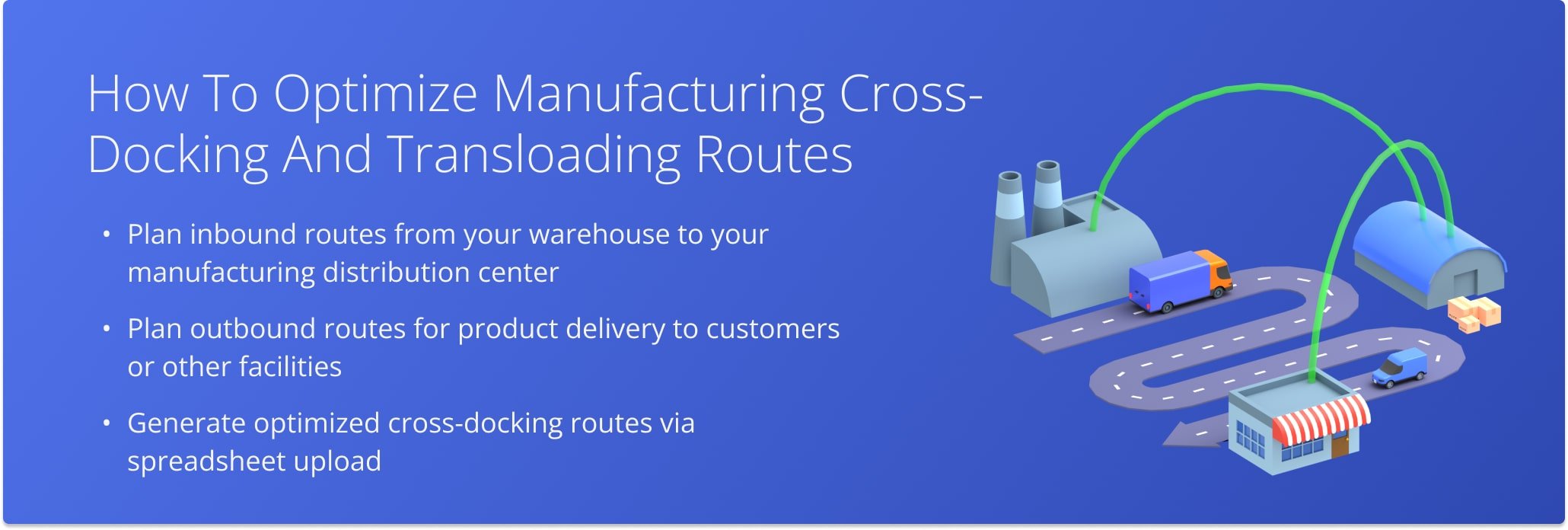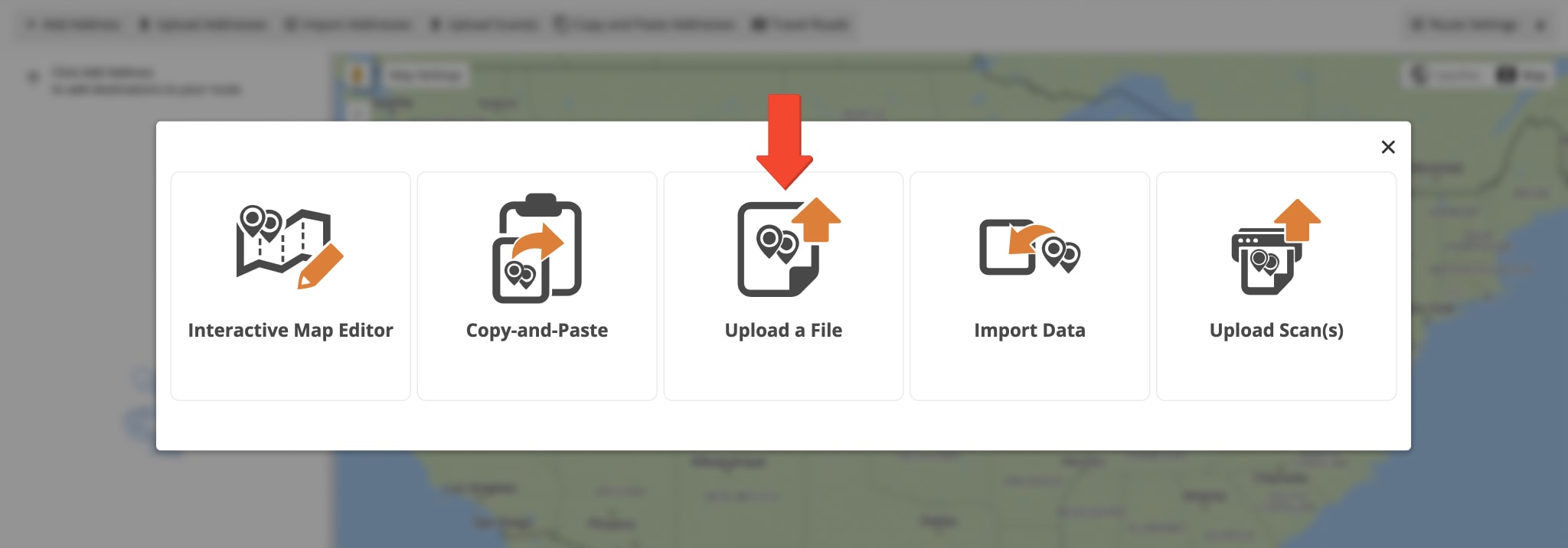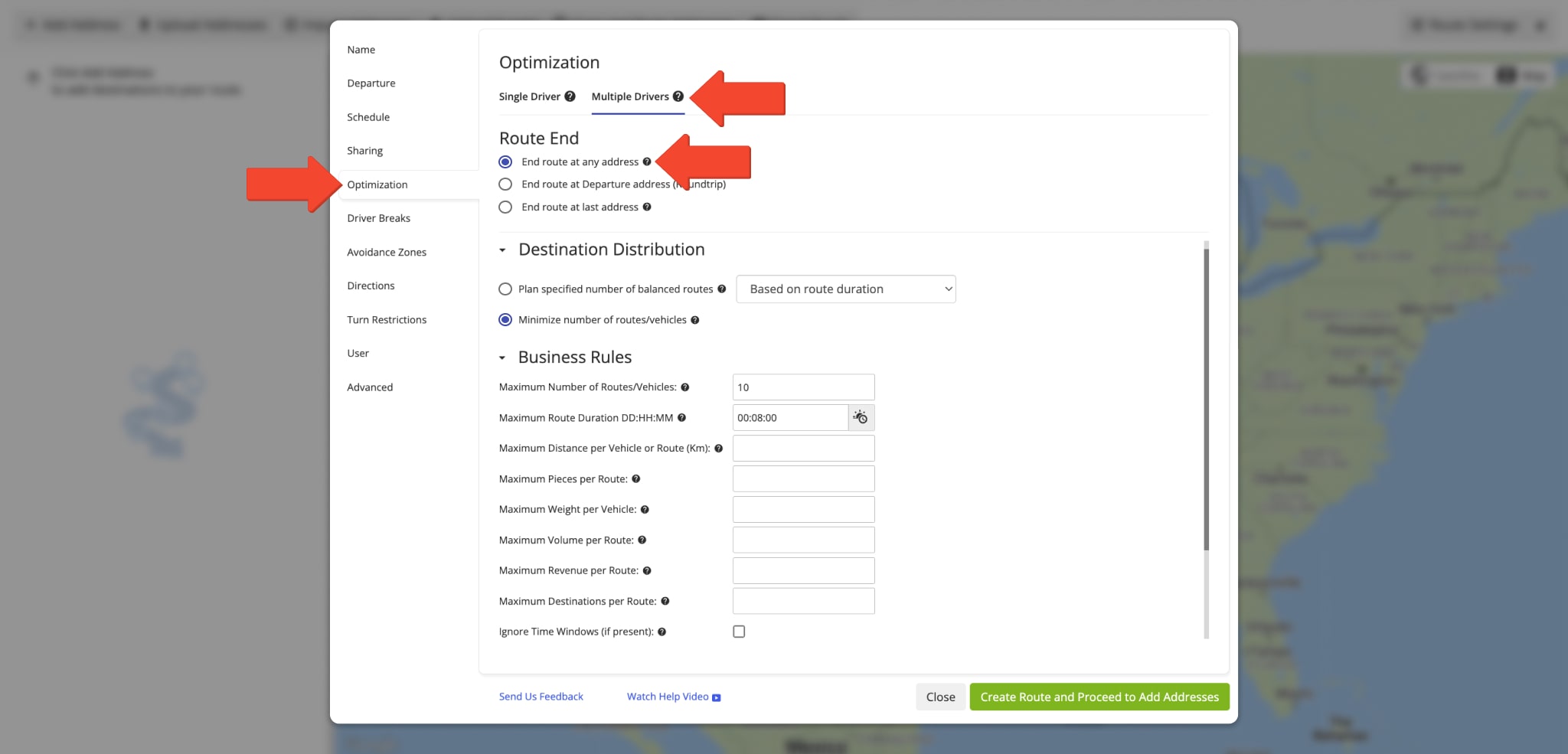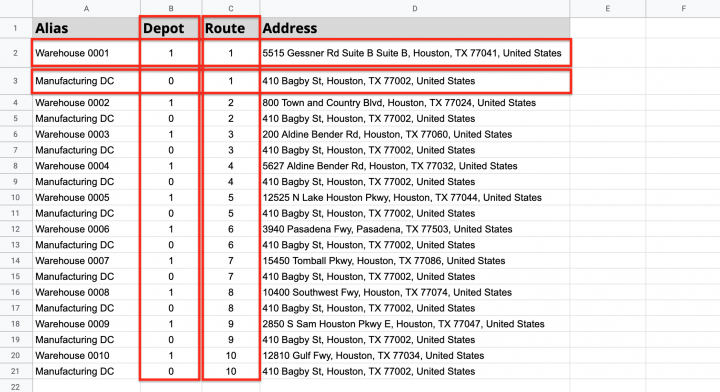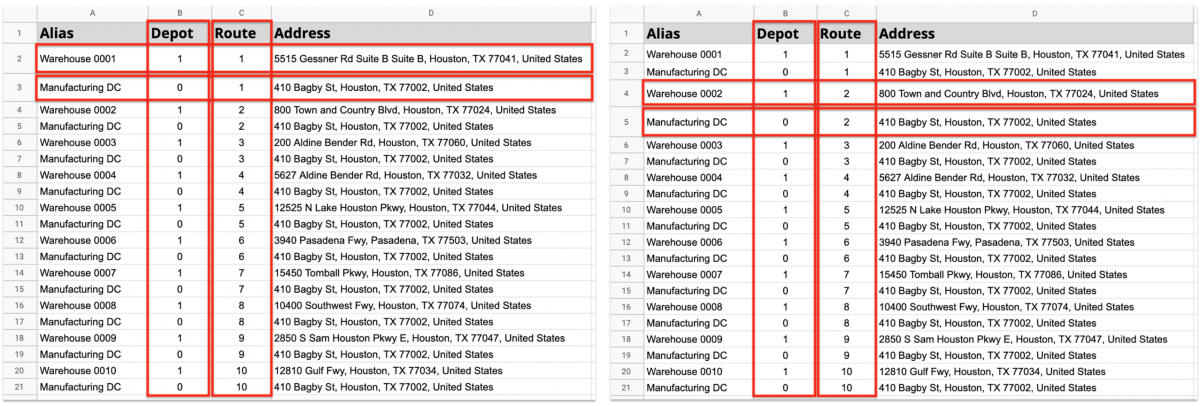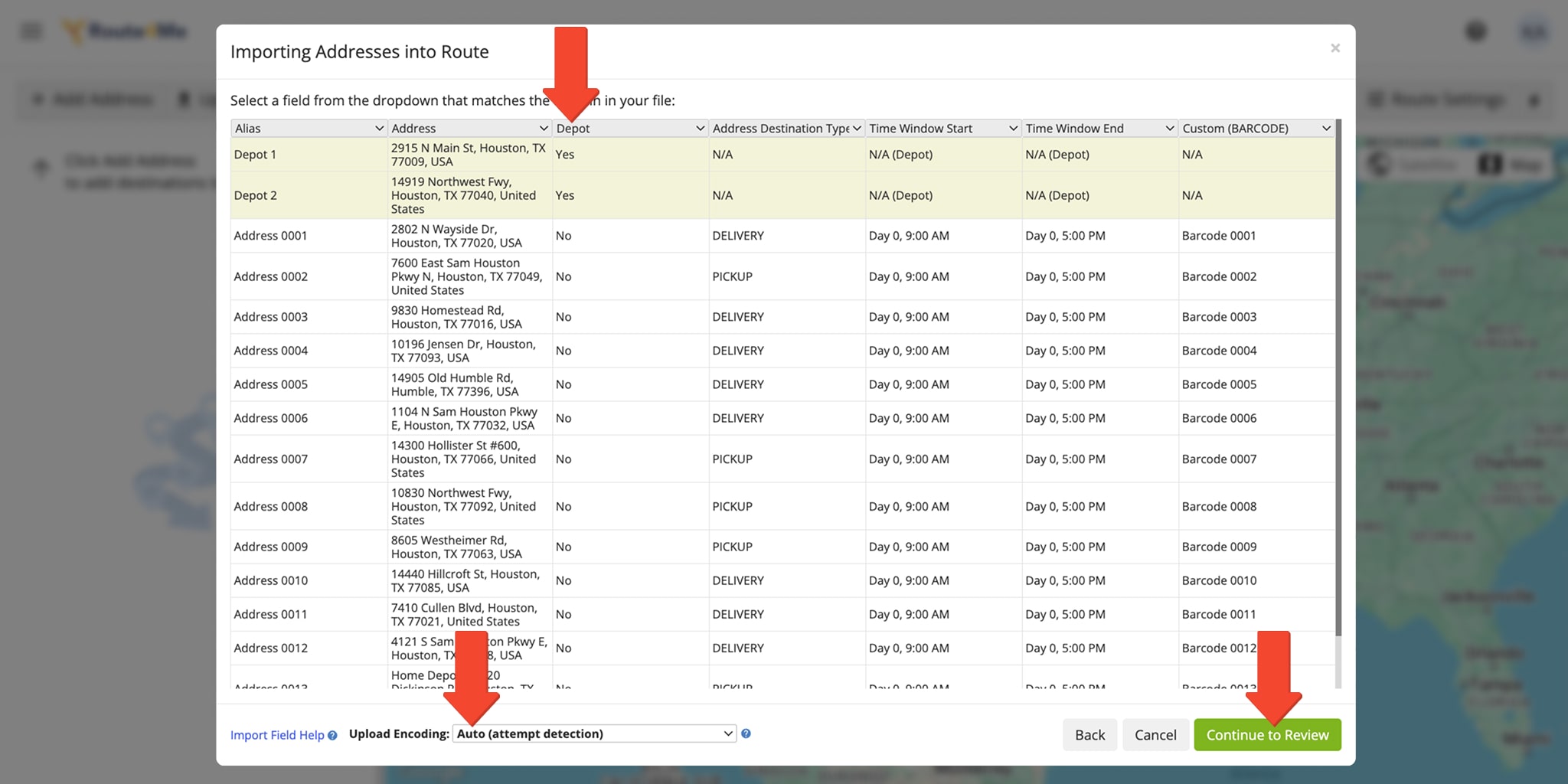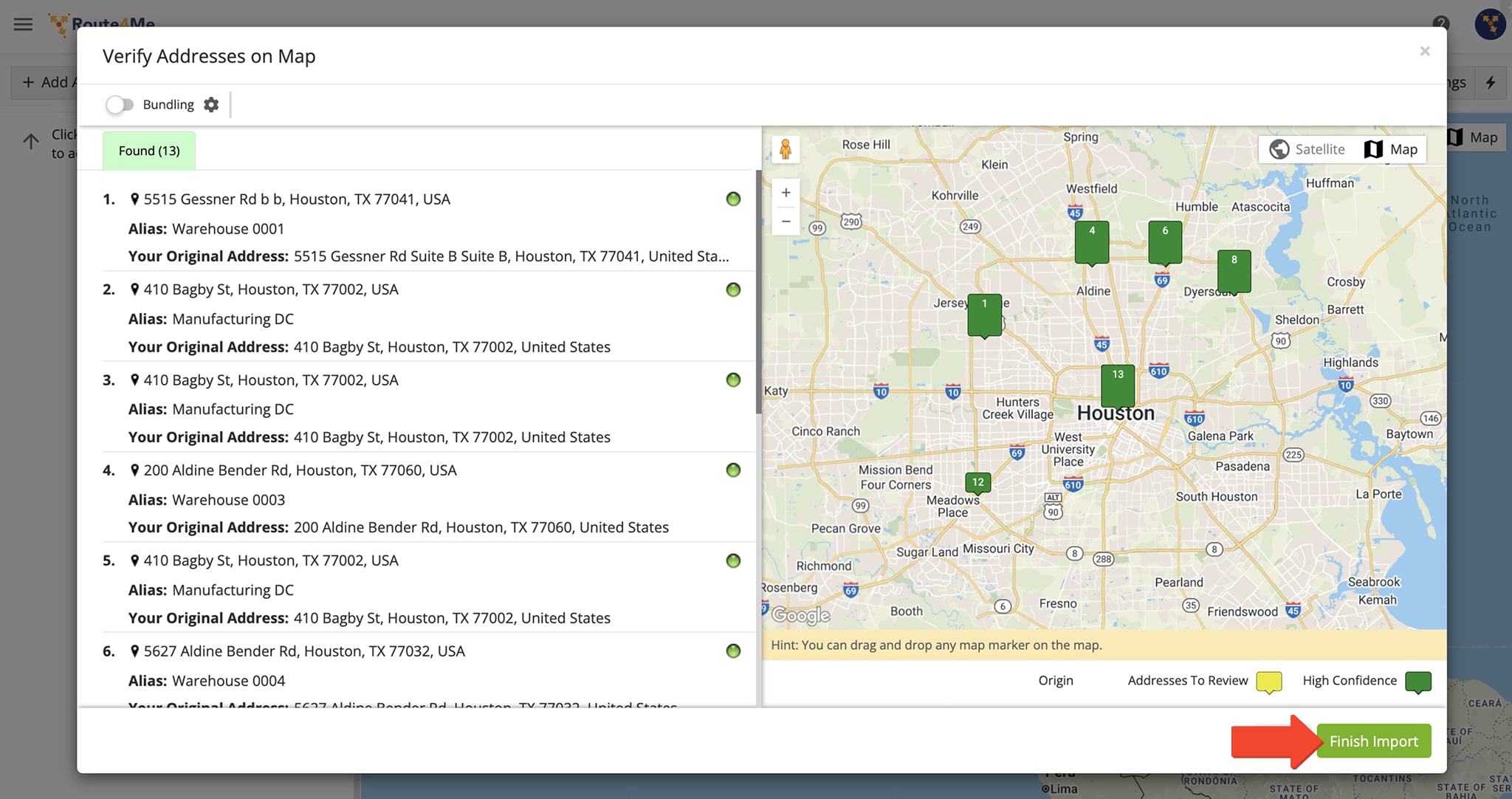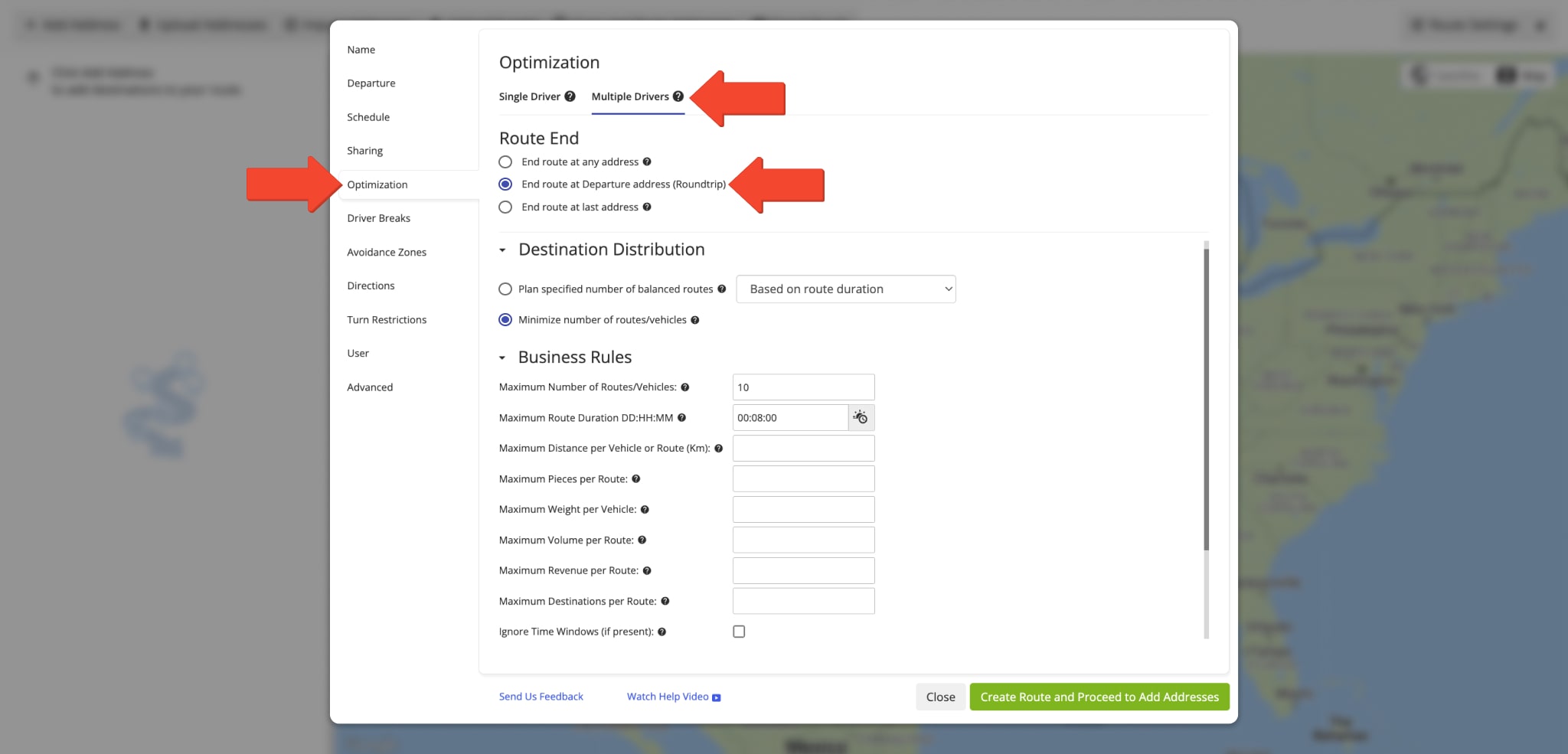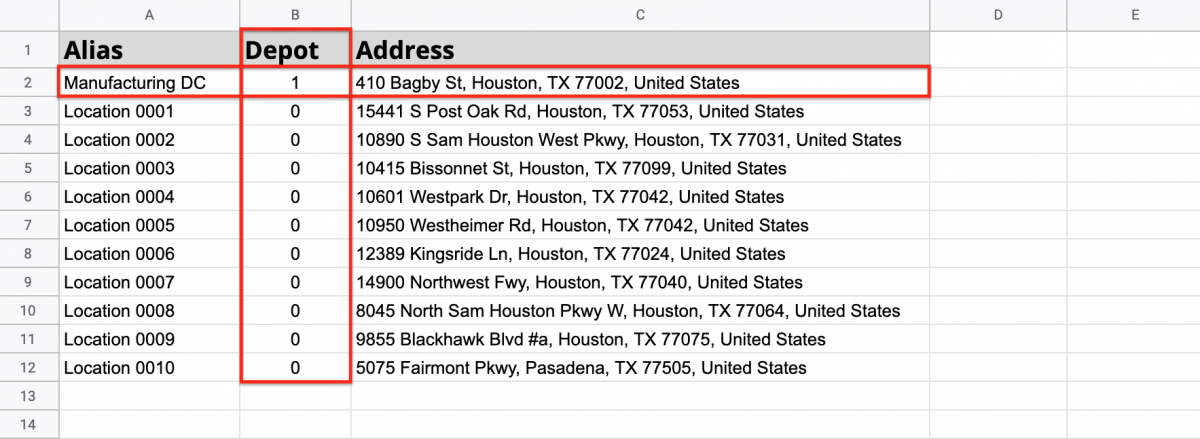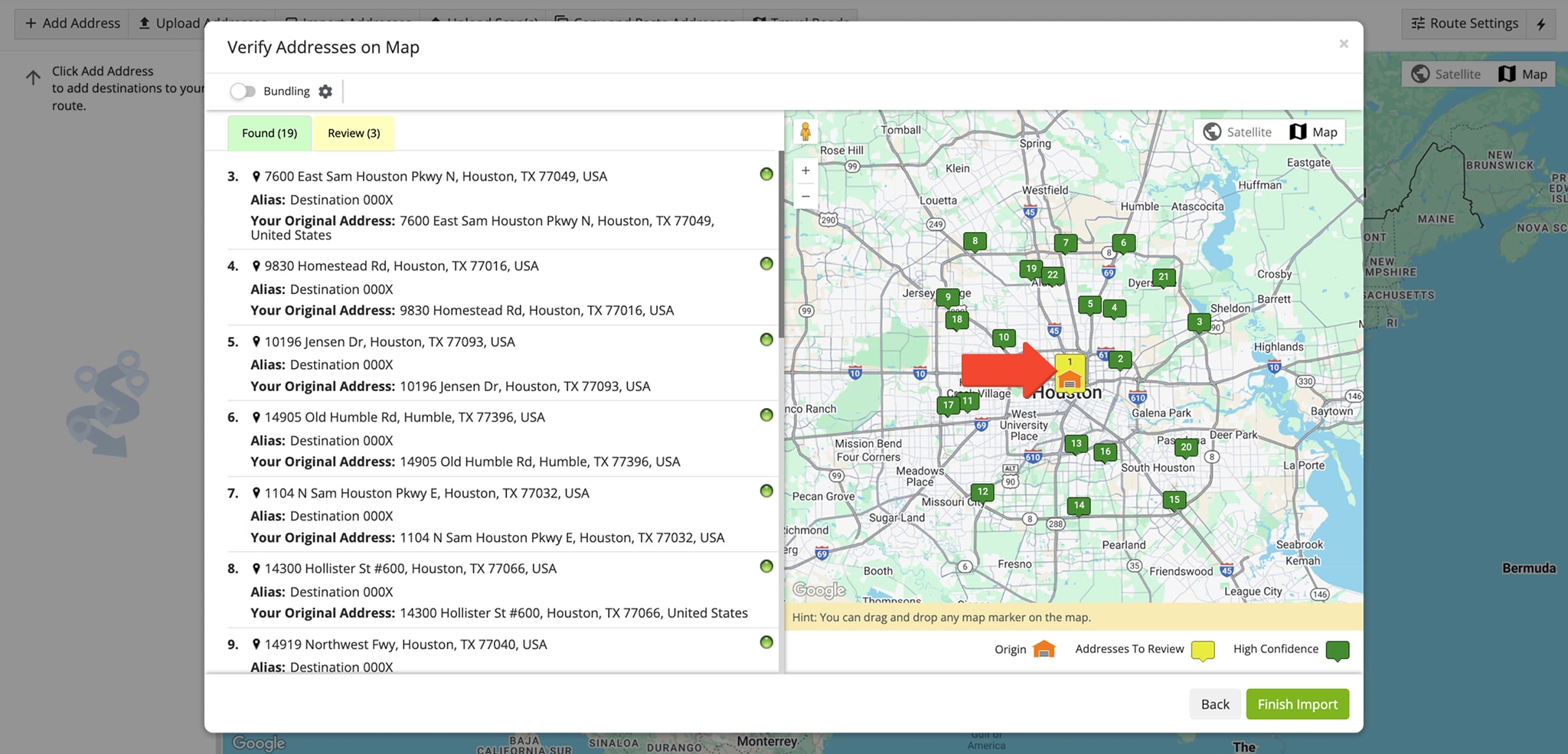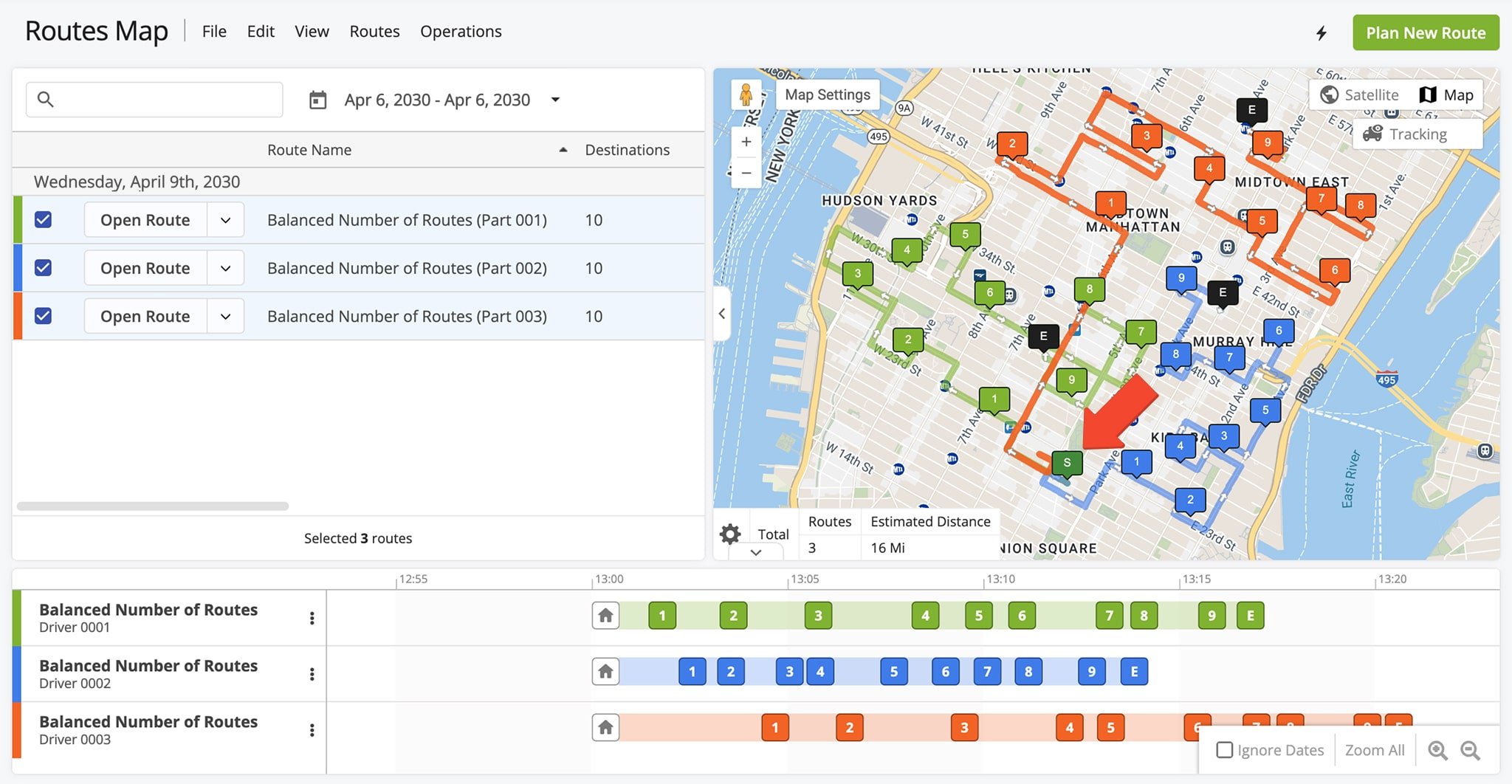How To Optimize Manufacturing Cross-Docking And Transloading Routes
Manufacturing cross-docking streamlines production logistics by delivering inbound materials from multiple warehouses to a central distribution center for assembly or processing. Once the materials are received and configured, the finished products are shipped to end customers, assembly lines, or additional facilities. With Route4Me’s route optimization platform, you can efficiently plan both inbound and outbound routes across your manufacturing supply chain. Simply upload your address spreadsheet, and Route4Me will generate time- and cost-efficient routes tailored to your exact manufacturing workflows.
To plan and optimize routes for transportation cross-docking and transloading, first, go to “Plan New Route” in the Navigation Menu, then select the “Upload a File” option.
Next, to plan multiple routes where each route starts from its own depot or warehouse and converges at the same distribution center, configure the following route optimization settings:
-
- Go to the “Optimization” tab.
- Select “Multiple Drivers Route” to plan all routes automatically.
- Choose “End route at any address” so each route finishes at the distribution center.
Next, import your address spreadsheet into Route4Me. To plan multiple depot routes with a predefined distribution of addresses, make sure your spreadsheet includes the required “Address” column, along with “Depot” and “Route” columns. In the “Depot” column, mark depots with 1 and route stops (distribution centers) with 0. Use the “Route” column to assign each address to a specific route that starts from its corresponding depot.
To have each route start from its own depot or warehouse and end at the same distribution center for unloading, create address pairs. In each pair, the first address (marked as the depot) is the warehouse, and the second address is the main distribution center. Learn more about single-depot routing.
After uploading your spreadsheet, Route4Me displays the data for review. Ensure all columns contain the correct information, marking addresses as depots with “Yes” in the “Depot” column. You can let the system process automatically by selecting “Auto (attempt detection)” or manually match column titles to their data. Once verified, click “Continue to Review” to proceed.
In the “Verify Addresses on Map” window, review all addresses and their geocoding, confirm depots and the main distribution center, then click “Finish Import”.
Once the routes are planned, each delivery route will start from its assigned depot, delivering the products needed for manufacturing to the main distribution center. If each route is set as a “Roundtrip”, vehicles will return to their depot or warehouse after unloading at the distribution center.
After planning routes for receiving inbound materials needed for manufacturing, you can create outbound routes from the distribution or assembly center to deliver the finished products to end customers. To do this:
- Go to the “Optimization” tab
- Select Single Driver Route or Multiple Drivers Route.
- Choose the route endpoints.
- Set advanced constraints, such as Pieces, Volume, Revenue, and Weight.
Next, upload the spreadsheet containing the addresses you want to visit. To ensure all distribution routes start from the same manufacturing distribution center, include a “Depot” column in the spreadsheet. Learn more about single-depot routing.
In the “Verify Addresses on Map” window, you can see all imported addresses and their geocoding statuses. The distribution center will appear as a depot icon, showing that all routes start from the same depot. After reviewing the addresses, click “Finish Import“.
Once the routes are planned, each distribution route will start from the same depot and branch out to multiple locations. If each route is set as a “Roundtrip”, vehicles will return to the same depot or distribution center after unloading.
Route4Me helps streamline your entire manufacturing cross-docking operation by first delivering required goods to the main distribution center and then sending finished products to end customers, all efficiently and cost-effectively. To plan thousands of cross-docking routes, simply import a spreadsheet with addresses, and Route4Me handles all the route calculations for you.
Visit Route4Me's Marketplace to Check out Associated Modules:
- Operations
Advanced Team Management Add-On
Last Updated:
